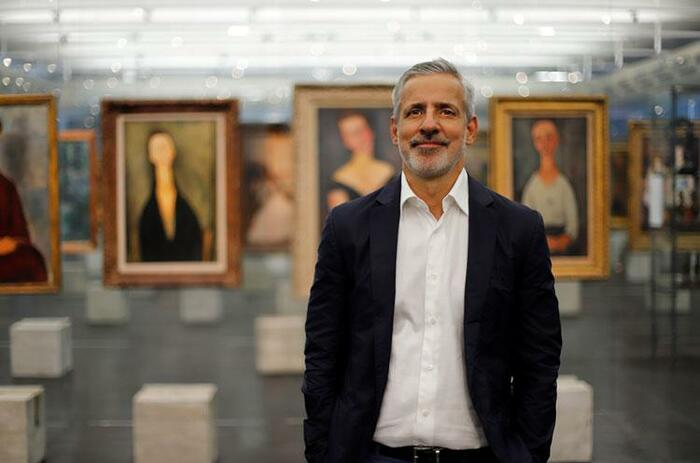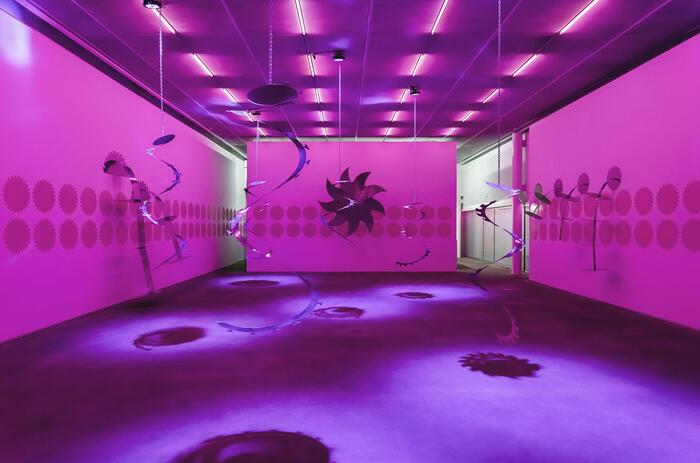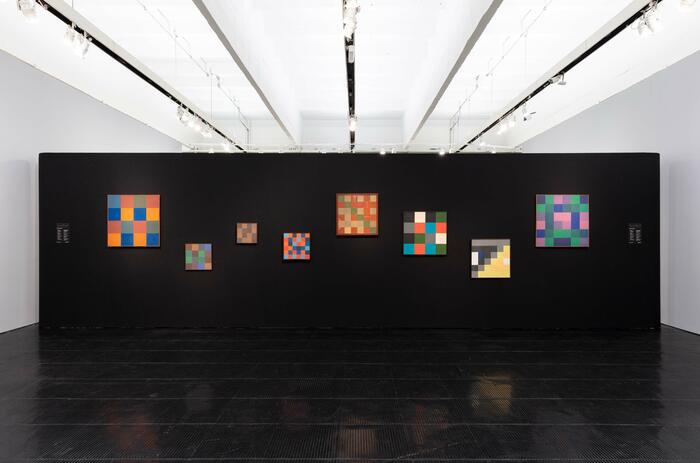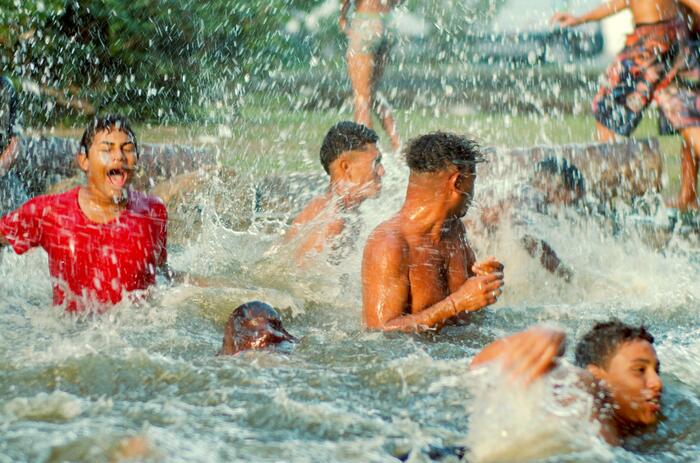ABALOS AUSTRALIS - 13TH MERCOSUR BIENNIAL - TRAUMA, DREAM AND ESCAPE
The 13th edition of the Mercosul Biennial, anchored in the Trauma, dream and flight tripod and finished last November, had encouraging developments, especially due to the outstanding presence of emerging artists, the strong contact with the public and the resumption of powerful spaces and traditional attractions of the event, such as the Cais do Porto. However, there were problems in the organization of the exhibition, the most serious episode of which was the '(dis)invitation' of names to exhibit works, and a certain frustration with pieces that would have a technological appeal.
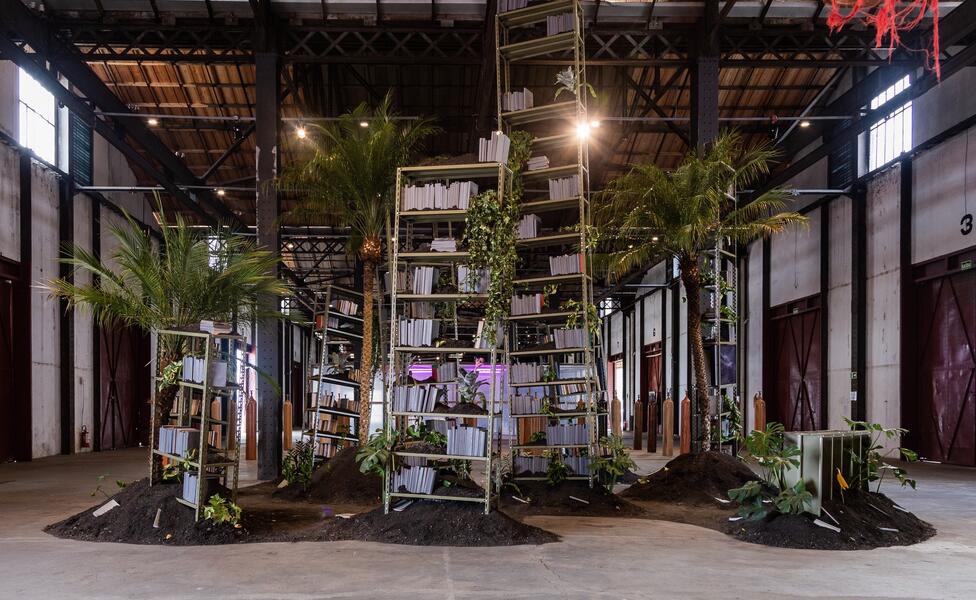
With a curatorial team led by Marcello Dantas -known for creating museums with strong interactive and audiovisual content, in addition to having brought international medallions in the field to Brazil, such as the Chinese Ai Weiwei and the British Antony Gormley- and made up of Carollina Lauriano, Laura Cattani, Munir Klamt and Tarsila Riso, the exhibition spanned 11 spaces in Porto Alegre, the southernmost capital of the country, with works by 102 artists from 23 countries. The face-to-face exhibition after a four-year hiatus due to the Covid-19 pandemic, had the constant and large participation of students from the city's public network, registering around 800,000 visitors, according to the organization.
“Faced with the latency of a spirit of time that manifests itself in the unconscious, we find ourselves before questions whose answers do not find a verbal form. This poetic place of a lump in the throat, of a gasp, of a kept secret, is what we seek to map”, reads the curatorial presentation text of the Biennial.
The strong point of the exhibition arose with proposals linked to that spirit of time that is still difficult to define, but permeated with painful experiences, consequences and extensions with imprecise, uncalibrated and volatile measures. In a happy meeting, the works exhibited in the A6 warehouse of the port on the banks of the Guaíba river - a place occupied by the Biennial, which hosted memorable moments in the history of the exhibition for more than two decades - already had scope if they were seen separately and, in a joint vision, it gained robust and poetic relevance. Most of them were signed by names that are not yet popular on the national circuit and, therefore, were a pleasant surprise.
Among them, Karola Braga exhibited Lágrimas, terra e crisântemo (2022), a piece that stands out both for its simplicity and for hosting a variety of polysemic readings. A sheet stretched over one of the openings of the industrial warehouse, moved to the sound and will of the winds and the unpredictable atmosphere of this place in southern Brazil. Karola is one of the few artists in the country who explores scents in her delicate and silent works. She gave the public a moving piece, since, by getting closer, they were able to experience the atmosphere of mourning that has affected the country so much in recent times -due to the pandemic, there were almost 700,000 deaths recorded in data from December 2022. And not only that, since the memories of the loss of loved ones are an inexorable fact of our existence. The artist also conceived her Soap Dishes, surreptitiously placed in the bathrooms of three institutions belonging to the Biennial's visiting itinerary.
Near Karola, two artists based in Minas Gerais also took advantage of the special exhibition situation of the old port hangar. José Bento, born in 1962 in Bahia, arranged sculptures in the shape of oxygen cylinders, but this time made of different types of wood. Integrating the Ar installation, the dozens of three-dimensional images refer to one of the most painful episodes of (the lack of) combat against the latest pandemic, when deaths due to lack of vital substance were repeated in the hospital network of Manaus, capital of Amazonas. The artist also used legally managed wood from species from the main Brazilian biomes, such as the Amazon rainforest and the cerrado.
Lucas Dupin, an emerging artist from Belo Horizonte, created the installation On Plant Memory in a hybrid area between past, present and future, nature and culture, the archaic and the futuristic, the permanent and the speculative. The public found themselves in front of shelves full of books in the middle of the earth and plants, as well as a video installation about traumatic events and images captured in the forests.
Both works managed to combine ecological appeal and a careful record of the wounded spirit of the time, without forgetting to formulate particular formal solutions, both seen separately by work and related to the site and expographic conditions.
Raphael Escobar, from São Paulo, with a strong presence in the São Paulo region known as Cracolândia - an area that brings together a large number of drug addicts and is located in the heart of the largest Brazilian metropolis - created Placebo, an environment that simulates a clandestine laboratory and drug store which, internally, houses a large metal table with 20,000 pills made from sugar and coffee. A video with subtitles on the manufacture of coffee is also broadcast, while the images are a mashup of records on the processes of legal and illegal substances. In this confusion of elements, the artist questions the discourses of various fields about such substances.
The highlights of the event did not only appear in the old port. In the Casa de Cultura Mario Quintana, a historic hotel from the early 20th century adapted to house a contemporary center, CL Salvaro from Paraná created the site-specific installation Em suspense. In an interstitial space of fragile materiality, a kind of incomplete or imminently dismantled hanging garden can metaphorize innumerable meanings. The artist also extracts from the smallest elements of urbanity robust poetics about the vestigial and the impermanent. In Margs, the main public museum at the state level, Dora Smék's accentuatedly strange three-dimensionalities gained prominence, in an intense investigation that combines the phenomenological, the feminine and the fragmentary in the pieces Barra, Colo and Canibais.
Another new space with an interesting configuration, the Caldeira Institute, located in a region without cultural facilities, could be an important legacy for the city's cultural scene; however, there are indications that cultural activities will not be extended. As a result of public knowledge, the artists exhibited in the large space in a section titled Trance presented varied approaches, some of which had more resonance. One of them was Vítor Mizael, with the Diorama installation. The taxidermied birds are as if frozen in the tragic moment when they crash into glass windows and walls. In this atmosphere of horror minimized in the solipsistic routine of today's large urban agglomerations, the artist from São Paulo, already with a persistent poetics that does not shy away from shock, brings to light the problematic relationship of the human species against another, of existences much more vulnerable, for example. The unusual tomb has a strong ecological appeal and is connected, by extension, with the crises of various orders that surround humanity at this critical moment in its survival on Earth. The institute can also cite the works of Bruno Borne, Estela Sokol, Gabriela Mureb and Pedro Carneiro.
Thus, the 13th Mercosur Biennial ends with the vigorous exhibition of these new artists, for the most part. The resulting corpus of these rising poetics was certainly more successful than the impressive presence of names inserted, even internationally, in the contemporary art circuit. Along with the resumption of previous art venues in the city, such as the port, and the massive visit by young students, there is some optimism for the continuation of the relevant exhibition. For a Biennial that has already had curators such as Frederico Morais, José Roca, Victoria Noorthoorn and Gabriel Pérez-Barreiro, among others, all with outstanding exhibitions, the history of the southern event in South America promises subsequent chapters of brilliance and, what is more, important, decisive continuity.
13th Mercosur Biennial - Trauma, dream and flight
Curators: Marcello Dantas, Carollina Lauriano, Laura Cattani, Munir Klamt and Tarsila Riso
From September 15 to November 20, 2022.


